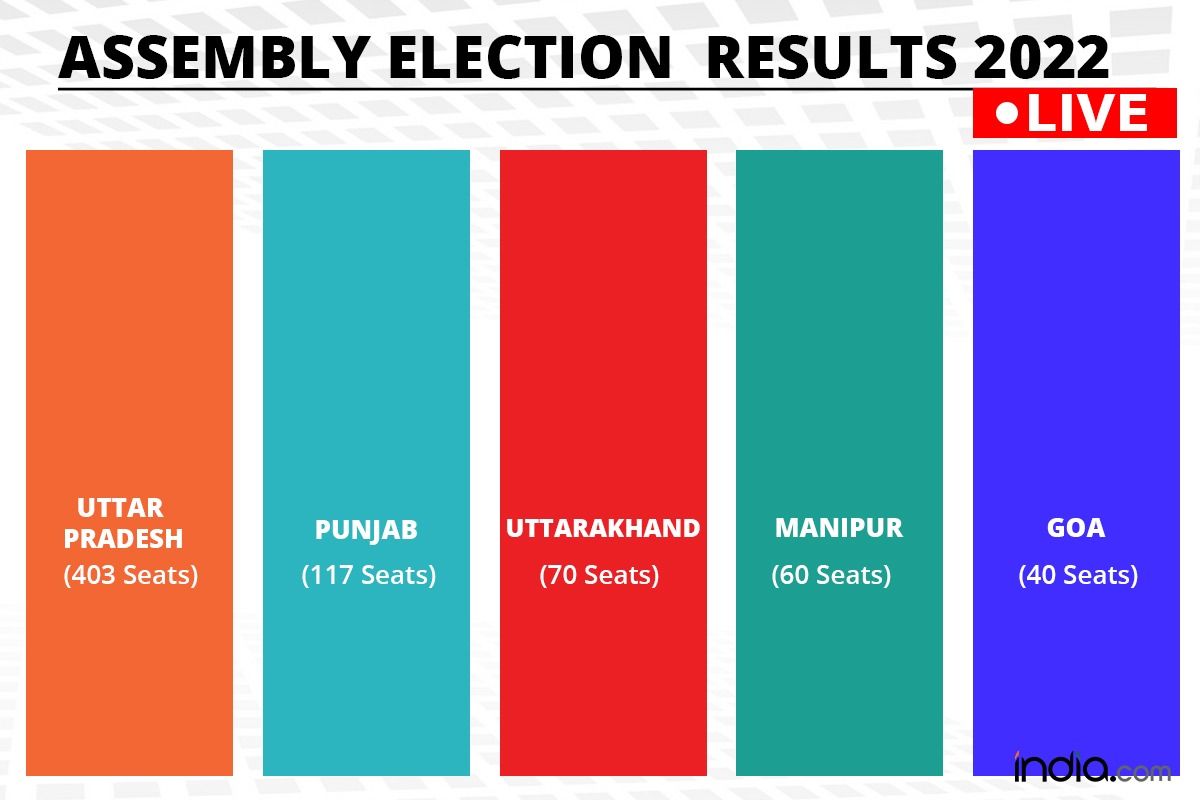
by Nilofar Suhrawardy 11 March 2022
Assembly elections in five states are over and results declared. However, several questions have surfaced which perhaps need to be considered seriously. This isn’t simply related to speculations voiced about faulty nature of Electronic Voting Machines (EVMs). Several strong messages conveyed by these results need to be perhaps paid serious attention. Though Bharatiya Janata Party (BJP) has returned to power in Uttar Pradesh (UP) in 403-member Assembly with Yogi Adityanath as Chief Minister for the second term, seats gained by Samajwadi Party (SP) bear their own significance. In 2017, BJP won 312 seats and 39.6% votes, against 70 taken by SP (21.82%-votes). This time, BJP has won less than 260 seats, though its vote share has increased to 41.8%. Though SP has won more seats (31.9% votes) than it did in 2017, the hard reality of it remaining more than 100 seats behind BJP cannot be ignored despite it securing 10% more votes than it did in 2017.
Undeniably, democratic nature of victory in five states raises questions with winning party having secured less than 50% votes in each. Equally astonishing is the major difference in seats won by winning party and its main rival hardly being reflected in the gap between percentages of votes won by two. In Uttarakhand, BJP has won 47 of 70 seats and Congress-19. Against 44.3% secured by BJP, 37.9 have favored Congress. While BJP has bagged 20 of 40 seats in Goa, Congress has succeeded in only 11. Here, BJP has secured 33.3% votes and Congress- 23.5%. BJP has won 32 seats in 60-member Manipur Assembly, Congress only five. While 37.8% have favored BJP, Congress has been supported by 16.8%. Mathematically, such percentage of votes suggests that Congress should have around 10 seats here.
Electoral tide in Punjab has dramatically changed this state’s political scene with Aam Aadmi Party (AAP) having swept the polls. AAP has won 92 seats in 117 Assembly and Congress only 18. While 42.02% votes have favored AAP, 23% have gone to Congress. AAP had witnessed a major leap against it being nowhere in this state around a decade ago. In 2017, AAP managed to win only 20 seats while Congress secured 77, suffering a severe downswing this time. Interestingly, while votes won by Congress are more than 50% of those won by AAP, comparison of seats secured by both tells a different story.
Difference between seats and percentage of votes can be to a degree explained by the apparent role played by their being split between several rival parties. This also explains the winning party being able to cross the half-way mark in these assemblies despite not securing 50% votes.
Dismal performance of Congress in Punjab cannot however just be explained by statistics. Intra-party rivalry has certainly proved to be a little too expensive for Congress. Congress went overboard in giving too much importance to political tantrums of Navjot Singh Sidhu and that too just ahead of these elections. Hoping to grab the chief ministerial berth, Sidhu started talking loudly against Captain Amarinder Singh literally leading him to resign as Chief Minister (September 18, 2021). Subsequently, he resigned from Congress and floated his own party. Neither Captain nor Sidhu secured victory in these elections.
Surprisingly, Sidhu chose to start voicing grievances against Captain after he had completed 90% of his term as chief minister. Congress leaders apparently erred by preferring to stand by Sidhu and turning their back towards Captain (then an old party member). They missed to take note of Sidhu having joined Congress in 2017 only. And this also marked their failure to efficiently tackle intra-party rivalry leading to a split in its own ranks. The party leaders gave little consideration then to prospects of intra-party division proving to be electorally damaging. Neither was any attention to paid to Sidhu’s negative campaign having picked up steam only when assembly elections were around the corner. Undeniably, Sidhu’s politics received considerable media coverage. But if he was not a known celebrity in sports and entertainment, he may not have earned much media coverage. His own defeat clearly suggests that media hype can hardly be relied upon for electoral gains.
True, Congress hoped to gain Dalit votes in Punjab as well as UP by selecting Charanjit Singh Channi to succeed Captain Singh. But how much could he have achieved within less than a year? Despite Congress hoping to cash on farmers’ protest and Channi-card, electoral results have proved otherwise.
While Modi-wave is assumed to be primarily responsible for BJP’s victory in UP, Punjab gives a different message. Here, BJP has won just two seats. Yet, AAP’s victory is suggestive of the importance voters chose to give this party led by Arvind Kejriwal. Neither BJP nor AAP has witnessed intra-party rivalry just ahead of elections in UP and Punjab, respectively. Though SP has failed to win in UP, increase in its gains compared to 2017 cannot be ignored. In 2017, this party too had witnessed intra-party problems. The failure of anti-BJP to align for these elections may be viewed as a possible reason for BJP to return to power in UP.
Electoral pattern displayed by five states strongly indicates the importance given by voters to leadership-reins of key parties in the race. Simply speaking, it is not simply Yogi’s victory in UP and that of Bhagwat Mann (AAP’s chief ministerial candidate) in Punjab, but that of their respective parties’ central leadership. Here is where Congress has failed dismally in Punjab. It has yet to come to terms with this hard reality in UP and the fact that though their leaders can earn media coverage, the same don’t reflect electoral support!
